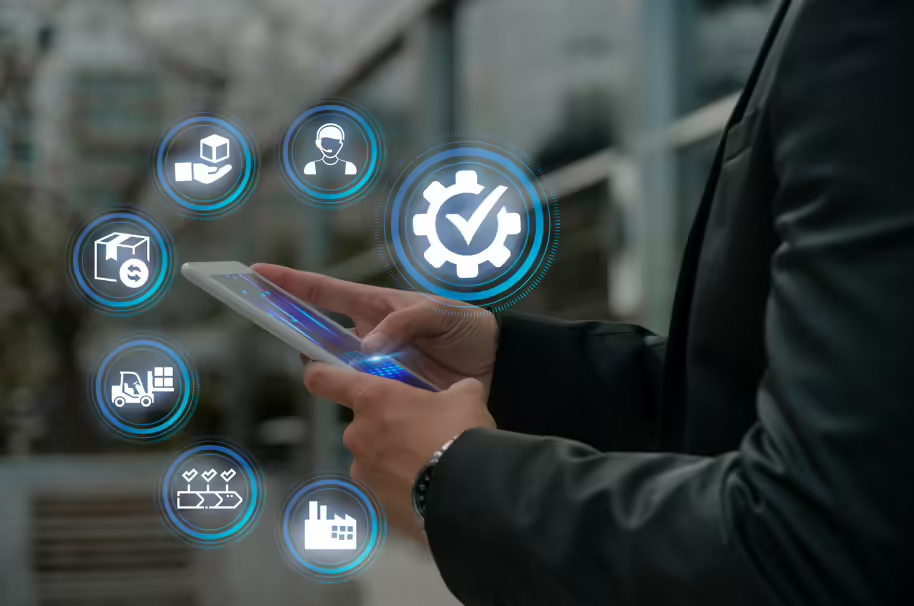Omnichannel Orchestration: The Ultimate Guide to a Seamless Customer Journey in 2026


Omnichannel Orchestration: The Ultimate Guide to a Seamless Customer Journey in 2026
In today’s hyper-connected world, your customers don’t see channels; they see one brand. They might discover a product on your app, research it on your website, and ask a question via WhatsApp. If each interaction feels like starting over, you’re not just losing a sale—you’re eroding trust. This is the critical problem that a multichannel approach can no longer solve. The future, and indeed the present of customer engagement, lies in omnichannel orchestration.
This isn’t just another marketing buzzword. It’s a fundamental shift in how businesses design, manage, and optimize the customer experience. By 2025, companies that fail to orchestrate seamless, context-aware journeys will be left behind by competitors who do. This comprehensive guide will break down what omnichannel orchestration truly means, why it’s non-negotiable for growth, and how you can implement a winning strategy.
The Core Difference: Omnichannel Orchestration vs. Multichannel Marketing
Many businesses believe they are ‘omnichannel’ simply because they are present on multiple channels—a website, an app, social media, email. This is multichannel marketing. The channels exist, but they operate in silos. An interaction on one channel has no bearing on the next.
Omnichannel orchestration is the evolution of this concept. Think of it as the difference between a group of talented musicians playing their own songs simultaneously (multichannel chaos) and a symphony orchestra playing a single, harmonious masterpiece (omnichannel orchestration). The conductor—the orchestration platform—ensures every instrument (channel) plays the right note at the right time, creating a beautiful and unified experience for the audience (the customer).
Here’s a breakdown of the key differences:
- Focus: Multichannel is channel-focused, aiming to maximize the performance of each individual silo. Omnichannel is customer-focused, aiming to create a single, seamless journey across all touchpoints.
- Data: In a multichannel setup, customer data is fragmented and siloed within each channel. Omnichannel orchestration relies on a unified customer profile, where data from all channels is centralized to create a 360-degree view of the customer.
- Experience: Multichannel often results in a disjointed and repetitive customer experience. Omnichannel orchestration delivers a consistent, personalized, and context-aware experience, regardless of the channel the customer chooses to use.
Why Omnichannel Orchestration is Non-Negotiable in 2026
Adopting a true omnichannel strategy isn’t just a ‘nice-to-have’; it’s a critical driver of business growth and resilience. Companies that master orchestration see significant improvements across key metrics.
1. Hyper-Personalization at Scale
With a unified view of each customer, you can move beyond basic personalization like using a first name in an email. Orchestration allows you to leverage behavioral data in real-time. A customer who just browsed hiking boots in your app can receive a web push notification about a sale on outdoor gear the next day, followed by a WhatsApp message with styling tips a week later. This level of relevance is what modern consumers expect.
2. Unprecedented Customer Loyalty & Lifetime Value (LTV)
A seamless experience builds trust and reduces friction. When customers feel understood and valued, they are far more likely to remain loyal. By orchestrating journeys that anticipate needs and solve problems proactively, you transform one-time buyers into lifelong brand advocates, dramatically increasing their LTV.
3. Increased Operational Efficiency
Instead of separate teams managing separate channels with conflicting messages, orchestration unifies your strategy. Marketing automation, powered by a central ‘brain’, ensures the right message is sent on the right channel at the right time without manual intervention. This frees up your team to focus on high-level strategy and creativity rather than repetitive operational tasks.
4. Rich, Actionable, Data-Driven Insights
By connecting all touchpoints, you gain a complete picture of the customer journey. You can identify points of friction, discover which channel sequences lead to the highest conversion rates, and understand how customers truly interact with your brand. This holistic data is a goldmine for optimizing your marketing spend and overall business strategy.
The 5 Pillars of a Successful Omnichannel Orchestration Strategy
Implementing a true orchestration strategy requires a solid foundation. These five pillars are essential for building a system that can deliver the seamless experiences your customers demand.
Pillar 1: The Unified Customer Profile
This is the heart of your entire operation. A unified customer profile, often powered by a Customer Data Platform (CDP), consolidates every piece of data you have about a customer—demographics, purchase history, browsing behavior, app usage, support tickets—into a single, real-time source of truth.
Pillar 2: Real-Time Journey Mapping & Triggering
You must map out potential customer journeys based on different goals (e.g., onboarding, purchase, re-engagement). The orchestration platform then monitors customer behavior in real-time, using specific actions (or inactions) as triggers. For example, adding an item to a cart but not completing the purchase triggers the ‘abandoned cart’ journey.
Pillar 3: AI-Powered Decisioning
This is where the ‘orchestration’ truly happens. Modern platforms use AI and machine learning to make intelligent decisions. The AI can determine the *next best action* or the *next best channel* for each individual customer. Should the abandoned cart reminder be an email, an app push, or an SMS? The AI analyzes the user’s past engagement patterns to choose the channel with the highest probability of conversion.
Pillar 4: Seamless Channel Integration
Your communication channels (App Push, Web Push, WhatsApp, SMS, Email, In-App Messages) must be deeply integrated with the orchestration engine. This ensures that the AI’s decisions can be executed instantly and that data from those interactions flows back into the unified customer profile to inform future decisions.
Pillar 5: Consistent, Context-Aware Messaging
The content and tone of your messaging must be consistent across all channels, yet adapted to the context of each one. A push notification should be short and punchy, while an email can provide more detail. The orchestration platform ensures the core message is consistent, preventing the customer from receiving contradictory offers or information.
Omnichannel Orchestration in Action: Use Cases for 2026
Let’s see how this works in the real world:
- Retail: A user, Maria, browses a dress on a retail app but doesn’t buy. An hour later, she receives a targeted app push: “Still thinking about it? The dress you love is waiting for you.” The next day, while on her laptop, she sees a web push notification showing the same dress. She clicks, adds it to her cart, but gets distracted. Two hours later, a WhatsApp message arrives: “Hi Maria, we noticed you left a beautiful dress in your cart. Complete your order now for 10% off.” She clicks the link and buys. The entire journey was seamless, personalized, and moved across channels intelligently.
- Finance: David starts a loan application on a bank’s website but doesn’t finish. The system triggers an automated email reminding him to complete his application, with a direct link to where he left off. A day later, a push notification from the bank’s app offers a chat with a loan advisor to answer any questions. This proactive, helpful approach guides David through a complex process, increasing the likelihood of completion.
- Travel: A family books a vacation package. The orchestration begins. They receive an email confirmation, followed by a WhatsApp message a week before the trip with packing tips. A push notification a day before reminds them to check in for their flight. Upon landing, they get an in-app message with their hotel details and a map. The journey is helpful, timely, and builds excitement.
Choosing Your Conductor: Selecting the Right Orchestration Platform
The success of your strategy hinges on the power and flexibility of your technology partner. The platform you choose is your orchestra’s conductor, and it needs to be world-class. When evaluating solutions, look for these key capabilities:
- A True Unified Customer Profile: Ensure the platform can ingest data from multiple sources in real-time to build that crucial 360-degree view.
- Advanced Segmentation & AI: The platform should allow for both rule-based and AI-driven journey creation, enabling you to automate decisions and personalize at an individual level.
- Broad Channel Support: Look for a platform that seamlessly integrates the channels most important to your customers, such as App Push, Web Push, WhatsApp, SMS, and Email.
- Powerful Analytics and Reporting: You need clear, intuitive dashboards that show you how your orchestrated journeys are performing, allowing you to test, learn, and optimize continuously.
This is precisely where indigitall excels. Our platform was built from the ground up to be the intelligent conductor for your customer communications, enabling you to design and execute sophisticated, real-time omnichannel journeys that deliver exceptional results.
Conclusion: It’s Time to Conduct Your Masterpiece
In 2026, clinging to a fragmented, multichannel approach is no longer a viable option. Your customers expect and deserve a single, coherent conversation with your brand, no matter how or where they choose to interact. Omnichannel orchestration provides the framework, intelligence, and technology to deliver on that promise.
By unifying your customer data, mapping intelligent journeys, and leveraging AI to deliver personalized messages on the right channels, you can move beyond simple marketing campaigns. You can start building real, lasting relationships that drive loyalty, increase lifetime value, and set your brand apart from the competition.
Ready to become the conductor of your customer experience? Request a demo of the indigitall platform and see how we can help you create your own harmonious masterpiece.












